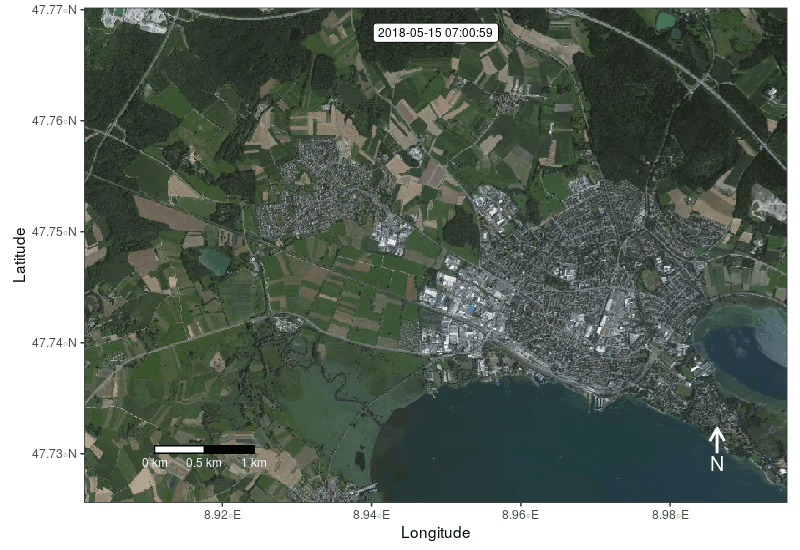Last active
December 23, 2023 00:06
-
-
Save 16EAGLE/de21779c75aec8be27013f99dc311073 to your computer and use it in GitHub Desktop.
Short moveVis example on how to colour paths based on a continuous variable
This file contains bidirectional Unicode text that may be interpreted or compiled differently than what appears below. To review, open the file in an editor that reveals hidden Unicode characters.
Learn more about bidirectional Unicode characters
| # use moveVis >= 0.10.2 for this example | |
| library(moveVis) | |
| library(move) | |
| library(plyr) | |
| # get example data. align movement to unique times and regular resolution | |
| data("move_data") | |
| m.aligned <- align_move(move_data, res = 4, unit = "mins") | |
| # let's create some fake continous variable by splitting the moveStack into single tracks | |
| m.split <- mapply(x = split(m.aligned), y = c(25, 11, 16), function(x, y){ | |
| x$var <- round(sin(seq(0,10, length.out = length(x)))*y)+y+1 | |
| return(x) | |
| }) | |
| # now, each move object has a column "var" with some values (this could be anything, | |
| # e.g. heart rate, temperature etc.) | |
| # let's create a colour ramp function and assign colours for each value in "var" | |
| colfun <- colorRampPalette(c("navy", "blue", "lightblue", "purple", "violetred")) | |
| m.split <- lapply(m.split, function(x){ | |
| x$colour <- mapvalues(x$var, 1:max(x$var), colfun(max(x$var))) | |
| return(x) | |
| }) | |
| # now, we have a colour column with individual colours per value for each individual | |
| # finally, merge the tracks back togehter into a stack... | |
| m <- moveStack(m.split) | |
| # ...and create frames from it | |
| frames <- frames_spatial(m, map_service = "mapbox", map_type = "satellite", map_token = "YOUR_MAPBOX_TOKEN", | |
| trace_show = T, path_legend = F, equidistant = F, path_fade = T) %>% | |
| add_timestamps(type = "label") %>% | |
| add_progress() %>% | |
| add_northarrow(colour = "white") %>% | |
| add_scalebar(colour = "white") %>% | |
| add_labels(x = "Longitude", y = "Latitude") | |
| # animate the frames | |
| animate_frames(frames, "moveVis_colours_by_variable.gif", width = 800, height = 550, | |
| end_pause = 1) |
Author
16EAGLE
commented
May 6, 2019

Sign up for free
to join this conversation on GitHub.
Already have an account?
Sign in to comment